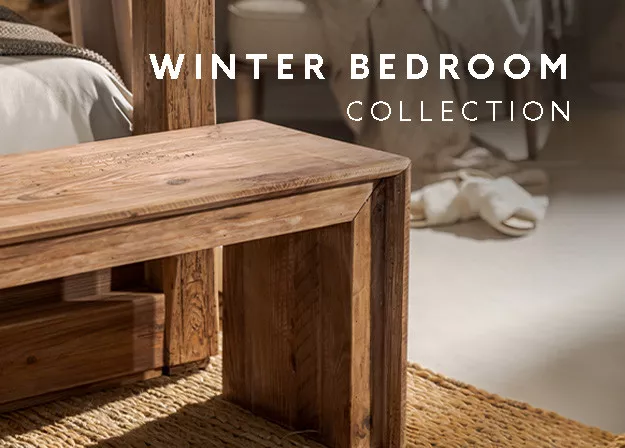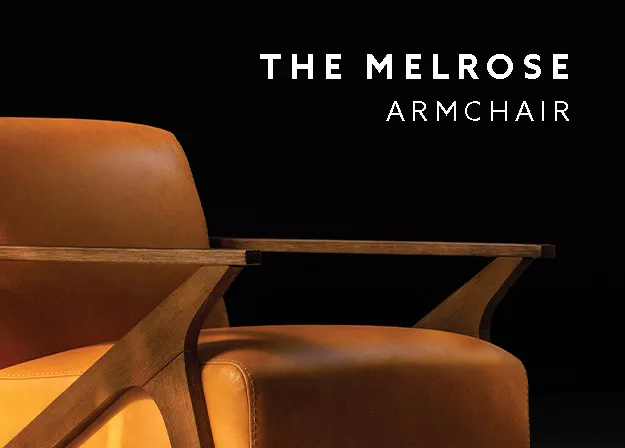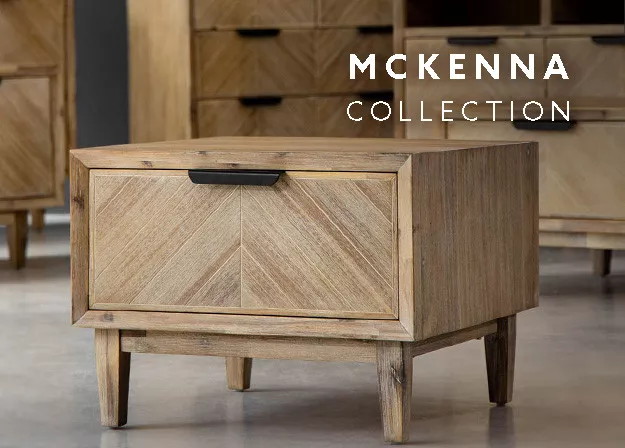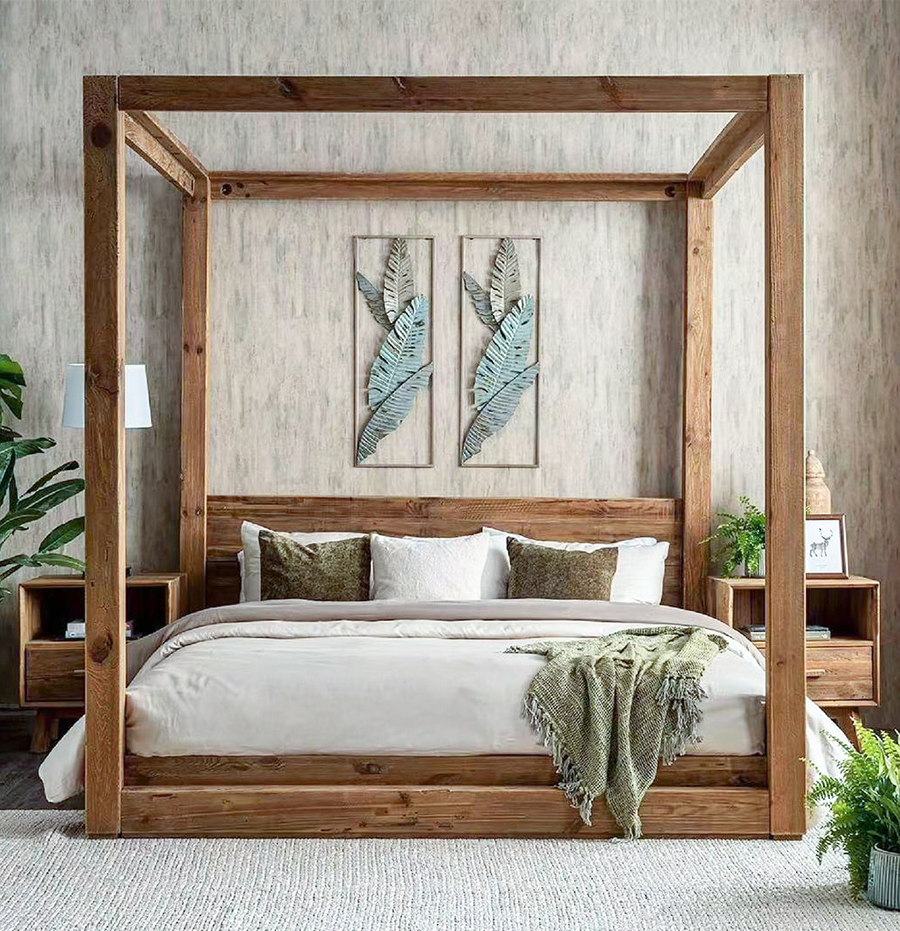Reclaimed Wood Furniture: Everything You Need to Know
View Our Range - Asgard 4 Poster Bed Base So you’ve seen the term ‘reclaimed wood’ while browsing furniture online and at your local retailer. Curiosity piqued, you almost ventured to ask the salesperson whether ‘reclaimed’ meant these items had been recovered from a criminal ring (operating in Camps Bay, judging by the price)... but thought better of it. (Besides, that sales guy looked like he’d had one too many espressos that morning). Still, that dining table you were eyeballing looked downright divine, and you’re wondering what the real story is behind this whole reclaimed wood thing. Well, there’s no need for awkward questions or confused looks (or coffee breath). Whether you’re curious what all the fuss is around reclaimed wood, wondering whether it’s worth the bucks, or what on earth reclaimed wood actually is, we’re here to answer all your burning questions. Featured Item - Orman Coffee Table What is reclaimed wood and where does it come from?Basically, the term ‘reclaimed wood’ refers to any wood that’s served one useful lifetime, which is then repurposed or upcycled instead of being demolished or turned into waste. Reclaimed wood is most often sourced from old buildings and wooden structures like bridges, docks and railways, or even crates and wine barrels, but can also come from old orchards, fallen trees and even submerged forests. (Yup, that’s a thing!). Reclaimed wood can be more than 100 years old, which actually turns out to be a major benefit when it comes to wood (more on that below). But, whether it’s reached a ripe old age as a pre-industrial barn, or met an untimely fate as a fallen tree that would have been headed for the chipper, reclaimed wood is a beautiful example of conserving a precious resource by turning old into new, and reducing the need to cut down more trees. View Our Range - TV Stands Why use reclaimed wood furniture in your home?Reclaimed wood has been gaining popularity for decades now in architecture, interior design and furniture design. But you don’t have to be an expert in one of these fields to appreciate why. When you gain a glimpse into the story and value behind reclaimed wood, it’s clear to see why so many people are bringing it into their home designs and decor. Here are three of the top benefits of reclaimed wood contributing to this growing trend:
Reclaimed wood furniture is 100% greenSpeaking of fresh air… If great looks and personality weren’t quite enough, maybe the fact that reclaimed wood is literally helping save the planet will make you blush (or rather, go green. You know, in a good way.) Thanks to the fact that reclaiming wood reduces waste and the felling of trees for new lumber, reuses a valuable material, and upcycles it into useful and beautiful new products, it’s the perfect trifecta of the Reduce-Reuse-Recycle paradigm. Talk about a win-win for nature and humanity! Featured Item - Maximus Ladder Shelf Not to mention that we’re talking about one of earth’s most precious and dwindling resources. While forests cover just under a third of the Earth’s land surface, they’re shrinking at the rate of about a soccer-field every second, according to a 2018 report from The Guardian. The World Bank estimates that around 10 million square kilometres of forest have been lost since the start of the 20th Century, with deforestation being one of the major contributors to global warming. With the growing urgency around the climate crisis, using reclaimed wood in your home is a small yet significant way to decrease your carbon footprint and increase your contribution towards a more sustainable planet.
Reclaimed wood boasts rare levels of strength and durabilityYou’ve heard your dad say a million times ‘they just don’t make them like they used to’ (and he could be talking about anything from a lawnmower to his favourite pastrami sandwich). Well, the saying definitely holds true when it comes to reclaimed wood vs. new wood. Reclaimed wood is usually sourced from what’s referred to as ‘old growth’ wood, which refers to the fact that in the good old days of yore, trees used for lumber were left to grow at a naturally slow pace, exposing them to a much wider variety of elemental conditions (but with much less air pollution than today). These trees would take decades and sometimes centuries to mature to their full glory. Compare this to the rate at which trees are harvested today while they’re still, shall we say, ‘green behind the ears’. It’s hardly a competition in the strength and durability department. With all that time maturing and taking all the hard knocks nature could throw at it, old growth wood boasts far superior density and stability, with much greater inbuilt resistance to rot, warping and cracking. In other words, you won’t find a wood more deserving of the label, ‘hardcore’. The thing is, you can’t just walk into your nearest lumber store and pick up some old-growth wood for your next home DIY project. Old-growth forests are now protected due to their rarity and biodiversity, which means that going the reclaimed wood avenue is your best bet to get your hands on some of this sought-after wooden gold.
What types of wood are used for reclaimed wood furniture?Wood doesn’t need any specific pedigree to be chosen for the reclamation route, as long as it’s in a salvageable condition. Almost any and all species of wood can be reclaimed, with the most popular varieties including teak, cedar, oak, pine and fir. It’s understandable why softwoods like reclaimed pine are a particularly attractive option–they offer the versatility and fresh aesthetic of their young cousins, while being much better equipped to handle everyday knocks and wear and tear, even when used outdoors. Reclaimed wood also offers the unique and guilt-free opportunity to use rare and exotic woods which would otherwise be off-limits due to their protected status, or the simple fact that trying to find one of these trees would be like playing Where’s Waldo (only, Waldo is a tree, and everyone else is also a tree). View Our Range - Orman Furniture Why is reclaimed wood more expensive than virgin wood?It may seem counterintuitive that ‘second-hand’ wood should cost more than the brand new variety. But when it comes to reclaimed wood, we’re not talking about some hand-me-down hutch with peeling paint. Aside from the fact that reclaimed wood offers the benefits we’ve outlined above, the cost of reclaimed wood is directly proportional to the amount of work that goes into upcycling it–a little like flipping a vintage car or fixer-upper house. Not only does it take a lot more effort to find good sources of reclaimed wood; the wood must be taken through many steps to make sure it’s up to scratch to be installed or turned into a new piece of furniture. This includes the initial extrication (safely harvesting the wood from existing structures), de-nailing (removing not just nails but any metal objects in the wood), quality checking, milling (stripping, cutting and sorting the wood into usable pieces), kiln-drying and treating (to remove unwanted moisture and any hidden pests). The final cost of reclaimed wood will of course depend on many different factors such as the type of wood, what went into the salvaging process, and the final product. The bottom line is, even though you’ll be forking out more than you would for virgin wood, as long as you’re buying from a reputable dealer, you’ll know what you’re paying for, and why.
Is reclaimed wood furniture durable?We’ve already done some raving above about the Ent-like strength of reclaimed wood. But let’s put some numbers behind it. When comparing the strength or resistance of old-growth wood to that of virgin wood, it scores up to 40 points higher on the Janka hardness scale, a system which measures the force required to partially embed a small steel ball into a sample of wood. It gets pretty technical, but let’s put it this way–if your tween is going to be practicing his newfound passion for karate on your dining room bench for the next five years, you’ll be in good shape with reclaimed wood (though we can’t say the same for the kid’s ego). Of course, durability isn’t just about weathering the hard knocks. It’s also about how long a piece of furniture can stand the test of time style-wise. It’s pretty safe to say that wood is one of the most timeless materials around, and with society’s increasing focus on sustainability, it’s an even surer bet to say that the reclaimed wood trend isn’t going anywhere anytime soon.
Is reclaimed wood furniture safe?It’s only reasonable that there would be some safety concerns around the use of reclaimed wood. After all, we’re talking about wooden structures like barns and crates holding who knows what, that may have been sitting around gathering dust and all sorts of uninvited guests for decades. It can also be quite the scavenger hunt trying to track down exactly where and how the wood was originally used, and what it may have been exposed to and treated with–especially in the days before people figured out that using lead in paint wasn’t one of humanity’s brightest ideas. These concerns are one of the main reasons why reclaimed wood undergoes such a rigorous treatment process before it can enjoy its new lease on life. Of course, anyone planning to do some wood reclaiming of their own for a home DIY project will need to expert up and take all necessary precautions to ensure they aren’t bringing any dangerous or unwanted toxins, bugs or other substances into their homes–especially when kids and pets are in the picture. If you’re in the market for a piece of professionally crafted reclaimed wood furniture from a trusted retailer, worrying over the safety and integrity of your purchase shouldn’t be taking up too much mental real estate (you’ve got that tweenager to worry about, after all).
View Our Range - Coffee Tables - 3 Seater Fabric Couches - Sideboards and Consoles Where to buy reclaimed wood furniture?So, are you ready to go green this holiday season (and turn your friends green with envy)? The only question remaining is where to find your own perfect piece of the reclaimed wood story (and let’s face it, you’re not going back to that store with weird coffee guy). With the reclaimed wood trend growing like wildfire (an unfortunate metaphor, yes), it’s not hard to find new retailers popping up across the country and around the web. Wherever you choose to shop for your first or next piece of reclaimed wood furniture, don’t be afraid to ask the questions you need to so you’ll know the authentic story behind the wood–including where it was sourced from and what went into getting it fully ready to head into its new life as your favourite table of all time. View Our Range - Beds At Cielo, we’re proud to bring our customers one of South Africa’s largest ranges of beautiful, hand-crafted reclaimed pine furniture, sustainably sourced, thoroughly treated and quality-checked, with a strong emphasis on maintaining the original qualities and character of the wood. So why not make us your first stop? (we promise, no coffee breath). Visit us online to view our wide range of reclaimed pine coffee tables, dining tables, beds, decor and more, or visit your nearest Cielo showroom today. Cielo - Inspiring Spaces |





































